Järvenpää 作者: 来源: 发布时间:2021-06-21
一、所属省或是州,具体位置,人口,面积
Järvenpää is a town and municipality in Finland. Järvenpää is a city of about 43,000 inhabitants in southern Finland, in the province of Uusimaa. Järvenpää belongs to Central Uusimaa, and its neighboring municipalities are Mäntsälä in the northeast, Sipoo in the east and Tuusula in the south, west and north. Järvenpää is part of the Helsinki metropolitan area and is one of the frame municipalities in the Helsinki region. Järvenpää covers an area of 39.93 km², of which 37.54 km² is land and 2.39 km² is inland water. Järvenpää is the seventh smallest municipality in Finland and the fourth most densely populated municipality.
Järvenpää is located about 40 kilometers north of Helsinki and about 70 kilometers south of Lahti. The city is built at the northern end of Lake Tuusulanjärvi, and its urban structure is based on the main line. Almost the entire population of Järvenpää lives in the Helsinki city center area.
Järvenpää is known as the residence of Jean Sibelius and Juhani Aho, among others. The city's most famous sights are several home museums, such as Ainola, Ahola and Villa Kokkonen. There is also an art museum in Järvenpää, whose permanent collection features works by Venny Soldan-Brofeldt and Eero Järnefelt in particular.
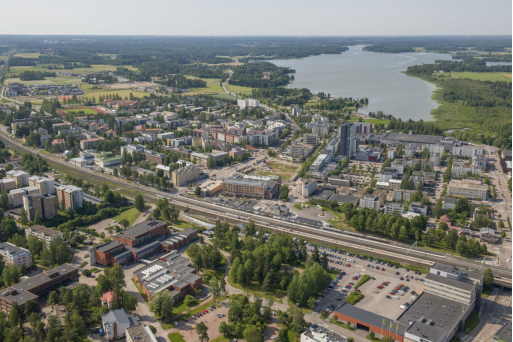
二、自然地理
1.地理条件
94% of the area of Järvenpää is land and 6% water. The city is located at the northern end of Lake Tuusulanjärvi. Lake Tuusulanjärvi bird protection area with its nature trails and bird towers right next to the city center is a nature conservation area belonging to the Natura 2000 program. There is also a nature trail in Vanhankylänniemi, also on the shores of Lake Tuusulanjärvi. Lake Tuusulanjärvi has been strongly eutrophic due to both agriculture and community structure, and efforts have been made to manage it in recent years. The Keravanjoki River flows through the eastern parts of the city, along which the Lemmenlaakso grove is one of Järvenpää's Natura 2000 nature reserves. The entire Järvenpää belongs to the Vantaanjoki catchment area. The watershed between the Tuusulanjärvi and Keravanjoki watersheds runs southeast through the city center from the ridges of the northwestern parts of the city.
Järvenpää is located on the Helsinki–Riihimäki railway track, some 37 kilometres (23 mi) north of Helsinki. Neighbouring cities are Tuusula, Sipoo and Mäntsälä. People also refer to Kerava as Järvenpää's neighbour, even though they do not technically share a border, thanks to the one kilometre-wide land area that belongs to Tuusula. Järvenpää is divided into 25 neighbourhoods.
2. 交通情况
Järvenpää is located along Lahdenväylä, ie highway 4. There are two junctions from the motorway to the city. Tuusulanväylä (main road 45) together with regional road 145 also leads to Järvenpää. Regional road 146 leads from Järvenpää to Pornainen, 1421 to Jokela and 1456 to Kellokoski. The railroad goes through the city centre. In addition to the main railway station, there are Ainola, Saunakallio, Haarajoki and (Purola now closed) railway stations.
The trip to Helsinki takes about half an hour, whether by rail or road, and to the airport of Helsinki-Vantaa about 20 minutes. Train connections to the capital are good. Uusimaa's trains leave the main station twice an hour, and from other stations once an hour.
Finland's main line runs through the center of Järvenpää, and the Lahti straight line, built alongside Lahdenväylä in 2006, bypasses the city on its eastern edge. In addition to the main station, the main line stations are Ainola, Saunakallio and Purola railway stations, although there has been no passenger traffic in Purola since March 2016. R- and T-trains running between Helsinki and Riihimäki / Tampere for commuter traffic in the Helsinki region stop at the stations, and D-trains also stop at the main station. Oikorata serves the people of Järvenpää through Haarajoki station, which has a Z-train connection to Helsinki and Lahti. The nearest long-distance train stations are located in Tikkurila and Riihimäki, where all local trains passing through Järvenpää also stop; There is also an I-train connection to Helsinki-Vantaa Airport via Tikkurila station. There are plenty of bus connections to Helsinki via Hyrylä. The same bus services also serve in the direction of Mäntsälä.
Järvenpää has decided to join HSL's regional traffic area from the beginning of 2022. Since Tuusula became a member of HSL at the beginning of 2018, tickets containing HSL's D-zone have been used on trains and buses running through Järvenpää to the Jokela and Kellokoski agglomerations. However, the people of Järvenpää have not been able to buy cheaper ABCD season tickets, as the city is not a member of HSL. For the same reason, HSL tickets are not yet available on Järvenpää 's internal buses.
三、经济发展和规模
Järvenpää is a growth center located in Uusimaa with over 44,000 inhabitants. It's got an excellent location, easy access and a unique drive to grow - which the media calls the Järvenpää phenomenon. These key factors have attracted companies to invest in the area.
Järvenpää is in the lead with its rapid growth compared to its neighboring areas. The population growth rate has been 2.5 percent in 2018, making Järvenpää the fastest growing municipality or city of Finland’s mainland. Järvenpää aims for 5,000 more workplaces by the end of 2040.
Järvenpää is in the center of the southern Finnish city network. Great connections in every direction make logistics and mobility effortless.
四、产业特点重点项目
It is the headquarters of the Honka company. In 2020, the main Järvenpää companies by turnover are:
Société | |
Rocla Oy | 145 M€ |
Helsingin Mylly Oy | 42 M€ |
K-Citymarket Järvenpää | 38 M€ |
Ammattiopisto Spesia Oy | 37 M€ |
Supersorsa Investment Oy | 32 M€ |
Kuljetus- ja Maanrakennus P Salonen Oy | 28 M€ |
Wursti Oy J & J | 26 M€ |
Mestaritoiminta Oy | 26 M€ |
Auto-Arita Järvenpää | 21 M€ |
Auramo Oy | 17 M€ |
五、风景名胜,景点( attractions)
1. Ainola
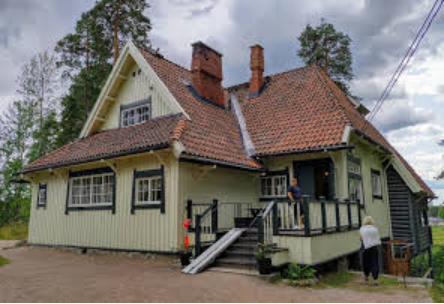
Ainola, meaning "Aino's Place", was the home of the Finnish composer Jean Sibelius, his wife Aino and their family from the autumn of 1904 until 1972. It was opened to the public as a museum in 1974. Ainola stands on the scenic shores of Lake Tuusulanjärvi in Järvenpää, 38 kilometres north of Helsinki, the Finnish capital. It was designed by the famous architect Lars Sonck. The only requests Sibelius had for Sonck were to include both a lakefront view and a green fireplace in the dining room. Water pipes were never installed until after Sibelius' death because he did not want the distraction while he was there composing. Its distance from the hustle and bustle of the nation's capital gave the composer the peace that he needed for his creative endeavours. His biographer Erik W. Tawaststjerna writes that "when Sibelius first left Helsinki, Järvenpää was to a large extent untouched countryside. Foals and sheep almost nosed their way into the house, and from time to time an elk majestically bestrode the grounds." There were also other artistic families living in the neighborhood who provided a lively social circle for the Sibelius family.
2. Lake Tuusula
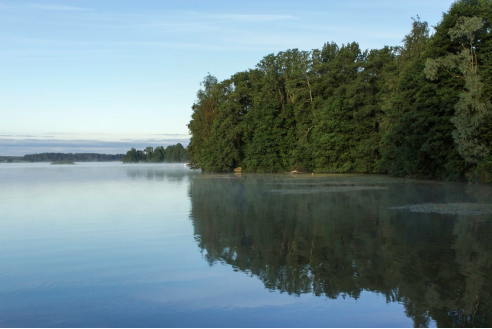
Lake Tuusula or Lake Tuusulanjärvi is a lake on the border of the municipalities of Tuusula and Järvenpää in Southern Finland. The lake has an area of 6.0 square kilometres. Since the beginning of the twentieth century the shores of Lake Tuusula has been an artist's colony. The houses of Jean Sibelius, Juhani Aho, Pekka Halonen, Eero Järnefelt, Joonas Kokkonen and Aleksis Kivi are on the edges of the lake. The Lake Tuusulanjärvi Water Protection Association has taken action to save the lake from eutrophication effects since the early 1970s. Apart from wintertime water aeration and cyprinid fish removal, some additional water is being fed into the Lake via the Päijänne Water Tunnel.
3. Järvenpää Mosque مسجد
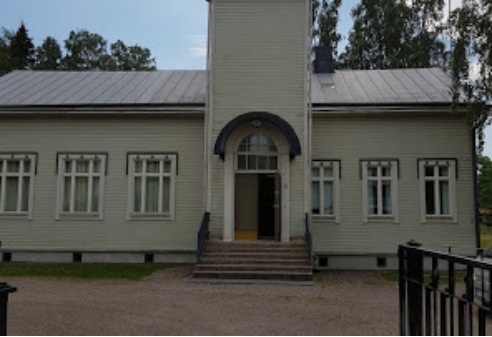
Järvenpää Mosque is a mosque located in the town of Järvenpää, Uusimaa, Finland, 30 kilometres outside the capital Helsinki. It was built in 1942 by Finnish Tatars and it is owned by Finnish Islamic Congregation. The mosque is made of wood and it has a small minaret although it has never been used for the call to prayer. Järvenpää mosque is the only building in Finland that is originally built to serve as a mosque. It was renovated in 2009.
六、历史文化
1.历史
Järvenpää was separated from its parent community Tuusula in 1951. Järvenpää was granted the status of a market town (kauppala) after the separation. Neighbouring districts Kellokoski and Nummenkylä were not added to the municipality of Järvenpää and the controversy over the issue still raises blood pressure fifty years later. In the event, Kellokoski remained part of the municipality of Tuusula. Järvenpää was granted full legal town (kaupunki) status in 1967.
2. 文化
Järvenpää had, in the early 20th century, a large artist community, including: Jean Sibelius, Juhani Aho and Eero Järnefelt. This was partly true because of a railway connection to Helsinki.
Järvenpää is widely known as the location of Ainola, the home of the composer Jean Sibelius. It is situated about two kilometers south of the city centre. The composer moved with his family to the cottage designed by Lars Sonck on September 24, 1904, and he lived there until his death in 1957. Ainola is open for visitors in the summer months as the "museum of Sibelius".[citation needed]
Juhani Aho moved with his wife Venny Soldan-Brofeldt to Järvenpää in 1897. They lived there for fourteen years in a villa, called Vårbacka, next to the shore of Lake Tuusula. The villa was later called Ahola.[citation needed]
The K-Citymarket of Järvenpää was awarded the Grocery Store of the Year title in 2019 by the IGD of the United Kingdom.
七、其他信息
The question of separating Järvenpää into its own municipality or possibly a township arose as early as the 1920s, at the same time as Keravakin separated from Tuusula. In 1923, the people of Järvenpää proposed the establishment of a separate municipality in Järvenpää, which would also have included Tuomala, Nummenkylä and Kellokoski. In 1927, Bjarne Westermarck proposed the establishment of a Järvenpää store. The Government instructed the Ministry of the Interior to investigate the matter, but the liquidator appointed by the Ministry rejected the proposal.
The issue came up again when the population of Järvenpää grew rapidly after the Second World War. When local conditions were very different from ordinary rural life, it was considered increasingly necessary to form a separate township from the locality. At a meeting in April 1949, the residents decided to submit a statement to the Council of State. On 17 February 1950, the Government decided to establish the Järvenpää store, which entered into force at the beginning of 1951.
However, the question of the boundaries of the new deal provoked much controversy. According to the initiators, the villages of Järvenpää and Tuomala should have been included in their entirety, part of Vanhastakylä and the Kellokoski factory community and parts of the Mäntsälä region in its vicinity. In that case, the area of the town would have been 61 km² and the population almost 8,400. According to one proposal, Jokelak would have been included in the new deal.
The municipality of Tuusula also approved the establishment of the shop, but demanded that no agricultural areas should be included, and the areas north of Kellokoski, Tuomala and Saunakallio, as well as the areas of agricultural schools, should be excluded. In that case, the area of the town would have been 28.5 km² and the population about 6,000. The southern boundary of Kauppala would have been Tervanokka on the shores of Lake Tuusulanjärvi, the northern boundary being Halkiantie. The people of Kellokoski also opposed the incorporation of their hometown into the new town.
八、联系方式
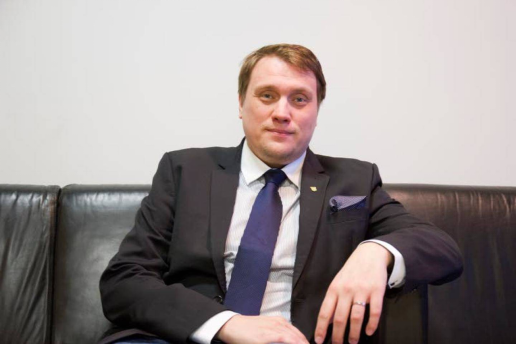
Mayor of the Järvenpää town: Olli Naukkarinen
Website: www.jarvenpaa.fi
Phone number: (09) 27 191
Email: kirjaamo@jarvenpaa.fi
Address: PL 41, 04401 Järvenpää
